19 min read
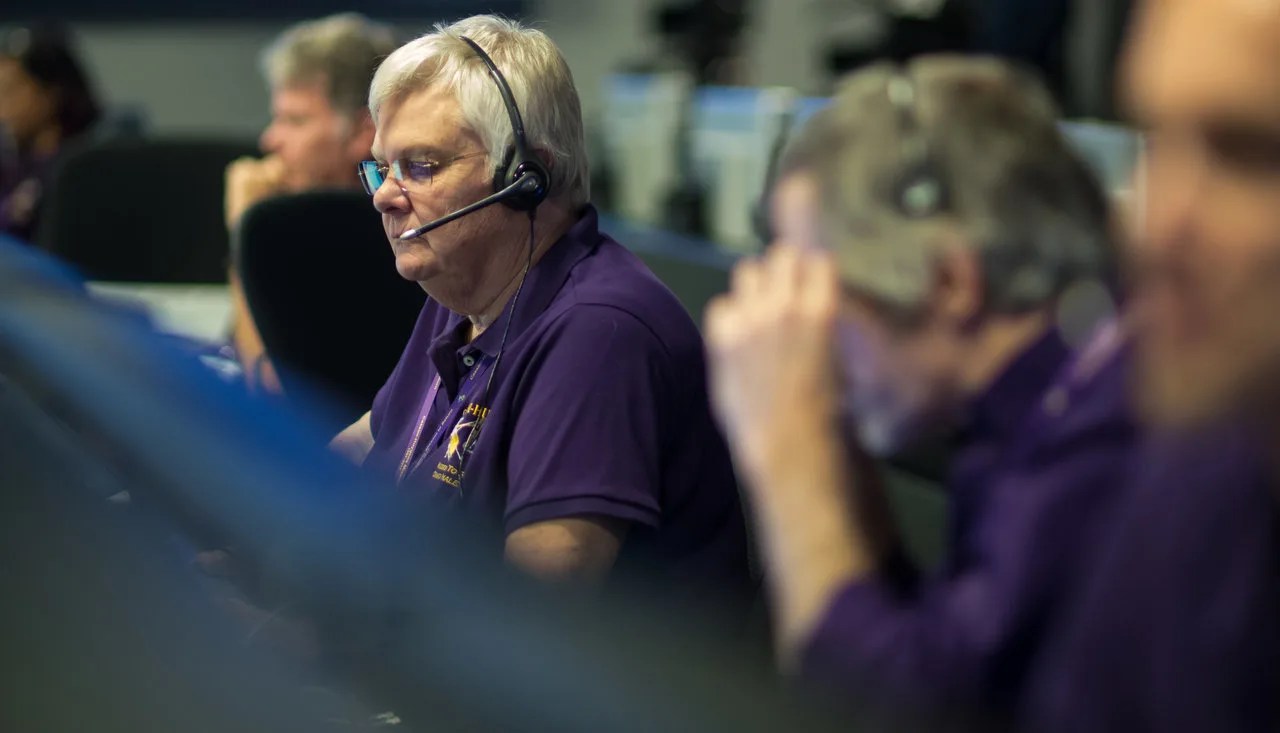
Grand Finale, Sept. 15, 4:05 a.m. PDT, Mission Control –- The leads for each of Cassini’s systems provide their status updates. All are normal, or nominal in space exploration lingo. The attitude control systems lead adds a coda to his update: “We’re a go for Cassini’s final plunge.”
Mixed signals from Saturn
Weekly staff meeting, Mission Control, Tuesday, July 18, 2017, 10:15 a.m. -- Earl Maize takes his usual place, at the end of a long table nearest the door of a nondescript conference room.
Only a hierarchy of Cassini team headshots, pinned to one wall, identifies this as the discussion hub for one of history’s most successful space missions.
Many in the headshots are represented around the room, in places solidified over 20 years of weekly meetings. Project Scientist Linda Spilker sits on Maize’s left. On her side of the table is Mission Planner Erick Sturm, and next to him Julie Webster, leader of the spacecraft operations team, in essence Cassini’s chief engineer. David Doody, supervisor of the control room “aces” who make sure signals get to and from the spacecraft, takes his regular spot at the back right corner of the table.
Others prefer to sit safely with their backs to the wall, or in the two rows of chairs lined up behind Maize.
Today, Maize has a problem: the time when Cassini will send its final signal from Saturn keeps changing.
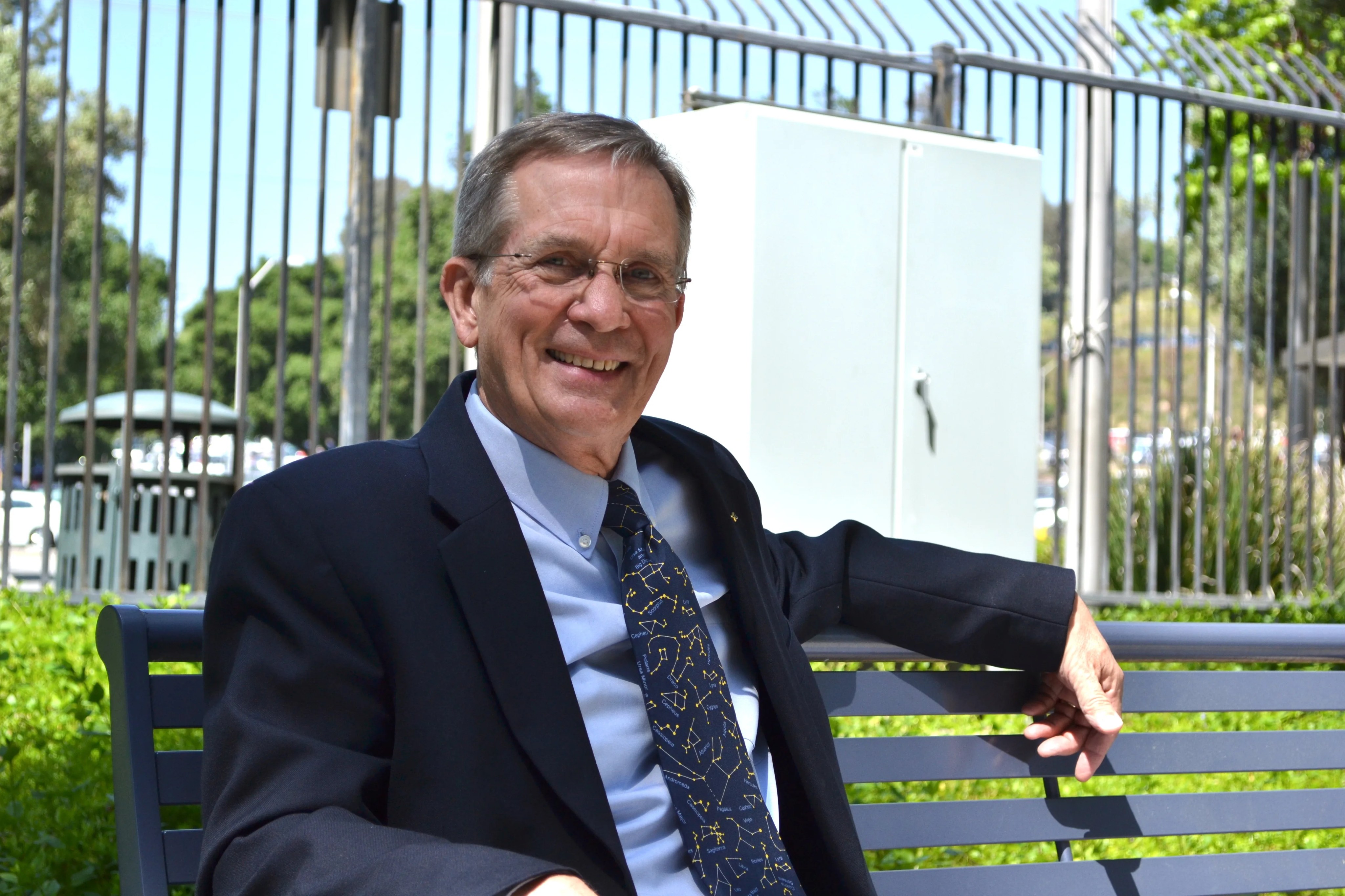
A set time would assist NASA Television, not to mention hundreds of media and dignitaries. But since no craft has ever dived into Saturn’s atmosphere, calling the critical moment is a matter of informed guesswork.
Maize and Sturm go back and forth on the time of signal loss, which has been creeping backwards from the original estimate of 5:08 a.m. on Sept. 15.
Maize tables the issue pending updated calculations.
“Someone’s got to figure out when the hell we’re going to hit Saturn,” he blurts out.
He does not sound angry. It is not clear he knows how to sound angry. Maize delivers his news in a Midwest-tinged aw shucks manner, whether discussing the death of a spacecraft or office space comings and goings.
He is consistent with dress, too, in a uniform of grey cross trainers, tan khakis, a navy or Cassini-purple golf polo, and silver wire-rimmed glasses framing a silvery crewcut.
He ends with praise befitting a one-way mission to the outer solar system.
“You’ve done exactly what you wanted to do. You’re in the middle of nowhere without gas.”
Grand Finale, 4:20 a.m. – Cassini is plummeting towards the equator from above the north pole and its mysterious hexagonal hole in the clouds, which the spacecraft discovered. In the last half hour, the inexorable pull of Saturn’s gravity has increased Cassini’s speed from 50,000 mph to more than 65,000 mph (104,000 kph). Every three minutes adds another 1,000 mph. The spacecraft is less than 15,000 miles (24,000 kilometers) from the surface of a planet it will reach only in pieces, and more than 900 million miles (1.5 billion kilometers) from Earth.
Update from Mission Planning: “The spacecraft has just crossed 50 degrees north latitude.”
Radio science under the radar
Mission Control, Wednesday, July 19 -- A billion miles away, the only manufactured object near Saturn beams a signal to Earth through the rings. The pattern of disruption in the radio waves speaks eloquently to scientists who study the rings, and who will mine Cassini’s data for generations.
This will be the last data of its kind to arrive from Saturn for decades, if not far longer. The experiment unscrolls in real time on a handful of monitors in an eight-by-ten foot cubicle deep in the building.
A handful of scientists and engineers follow the developing graph while communicating with technicians at antenna dishes tracking Cassini in locations around the world.
“It’s a gift. It’s a gift to just see science in real time,” says one observer.
Space exploration is a quest for all humanity. But there is a strange anonymity to these final studies of Saturn’s rings. Almost none of Earth’s six billion inhabitants are aware of the data arriving here, in this oversized closet in a corner of Pasadena, California.
These were record-setting experiments for radio science. Some observations lasted longer than a day, and required multiple handovers of the signal between five tracking stations run by NASA’s Deep Space Network and the European Space Agency.
During one observation, a sudden antenna failure at a tracking station forced the team to call for backup. An engineer drove two hours at night to an ESA station in New Norcia, a remote monastic community in western Australia, to point the receiver towards Cassini.
It is a kangaroo-dotted drive Aseel Anabtawi knows well. As leader of the radio science team’s engineering group, she traveled to New Norcia in 2016 to install its radio science receiver.
The final radio science experiment hit hard for Anabtawi. She has been on the mission since 2003, and at JPL since 1993.
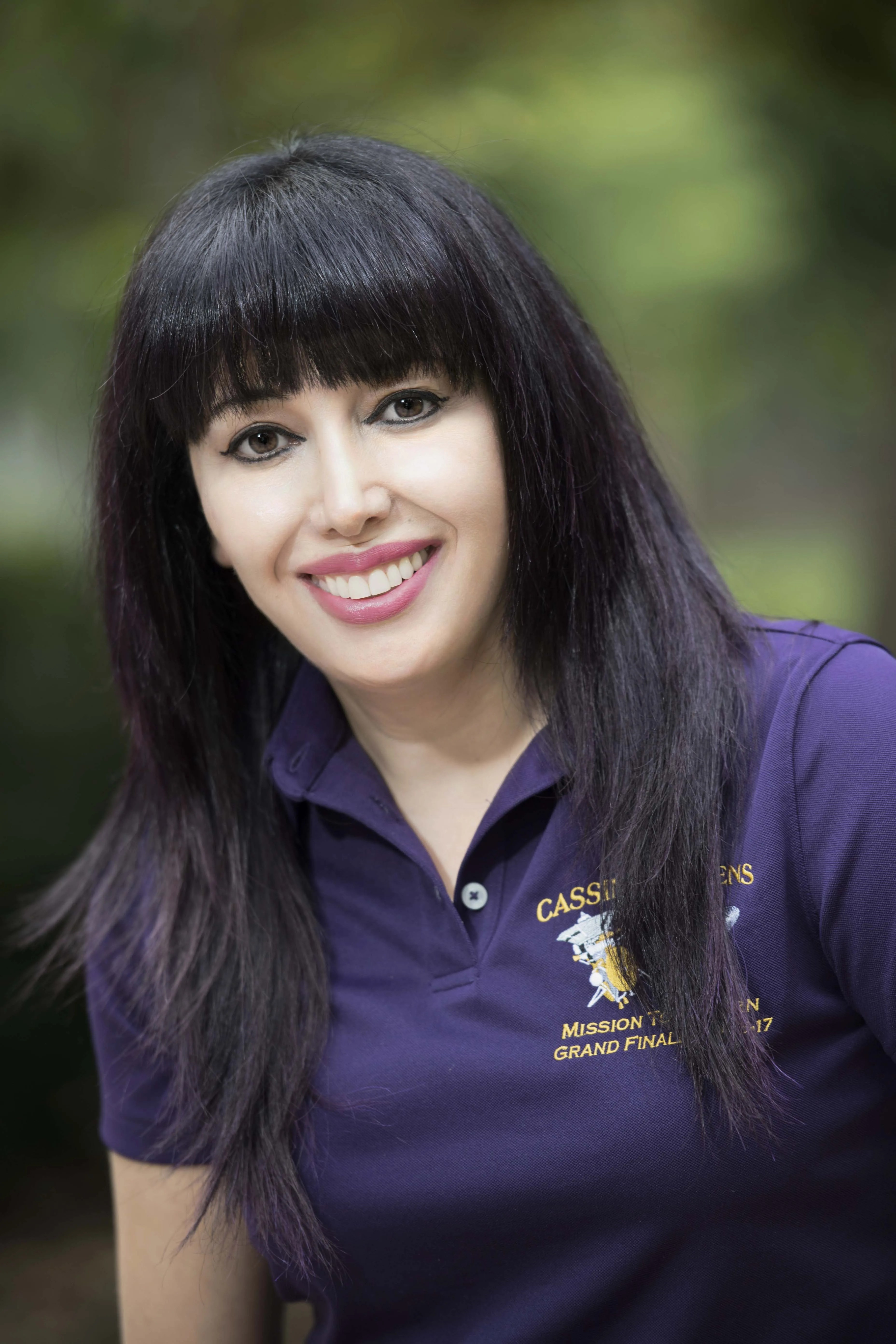
“I’m still trying to get over last week,” she said a few days later. “What got to me this time was not the physical part. Yes, it was a 30 hour observation, very long, very demanding, night shift.
“But it was the emotional part that really got to me, just thinking this is coming to an end. Sometimes it’s too much to take.”
Early on the morning of Sept. 15th, on console for the radio science team, Anabtawi will be the first to see Cassini’s signal vanish. The final blips will come to her from the receiver she installed in New Norcia.
Grand Finale, 4:33 a.m. –- Anabtawi looks anxiously around the room and rests her chin on her clasped hands. The screen in front of her shows a steady radio signal as Cassini breaks 70,000 mph and closes to 9,000 miles of Saturn.
Mission Planning: “The spacecraft has just crossed 40 degrees north latitude.”
The window is closing fast
Weekly staff meeting, Tuesday, July 25, 10:30 a.m. -- A Cassini member who works with the safety office raises an issue at the weekly staff meeting.
She would like an exit door fixed, because it shuts too quickly on the person leaving.
When your 20-year mission is coming to an abrupt end, a door that whacks you on the way out makes for uncomfortable symbolism.
It is almost a moot point, because she will have to vacate her office no later than the end of September –- or sooner, as it turns out: at a staff meeting a month later, she announces she is moving offices.
Grand Finale, 4:40 a.m. -- Update from flight director systems lead: “We are about 15 minutes from predicted end of mission. This might be a good time to pass out the farewell peanuts.”
After a long silence, the response: “Copy that.”
The legendary lucky peanuts, passed around during launches to ward off mishaps, are invoked to commemorate a deliberate crash.
Fate sealed, pulsing with life
Science Planning and Sequencing team staff meeting, Thursday, July 27, 10 a.m. -- “I guess this is starting to be real. Mission ending,” murmurs team leader Bill Heventhal during a discussion of office space, budgets and invitations to the Grand Finale.
Heventhal had been on the Mars Observer mission a short time when the spacecraft disappeared forever, just before entering orbit in 1993.
Somehow, it may be simpler to grieve a short mission than one spanning entire careers, and easier to lose a spacecraft by accident than on purpose.
Less than 48 hours from the end, Heventhal reflects on Cassini’s last pass of Titan, whose gravitational energy gave the spacecraft a fateful push.
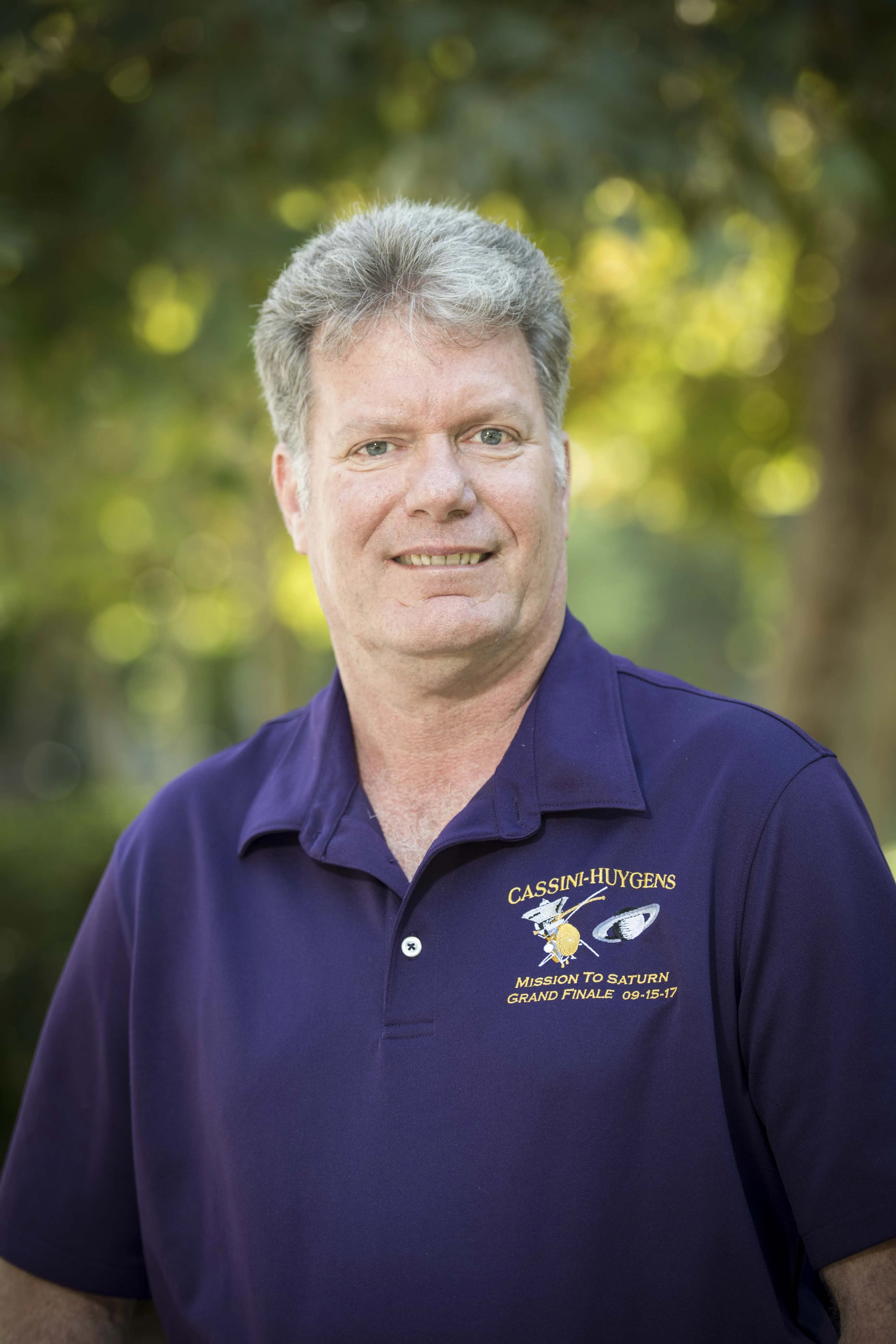
“When we flew by Titan two nights ago, that was the lethal injection. Now we’re just waiting for the medication to go through the system,” he says.
As its time draws to a close, Heventhal finds himself thinking more and more of Cassini as a living thing. The less life remains for the spacecraft, the more lifelike it becomes.
“This one’s going to be difficult. This one, I’ve got a hell of a long time spent on this program,” he says. He expects to dissolve into sobs when Cassini vanishes.
“It will be rough. But what she’s done is incredible.”
Heventhal will move to NASA’S Europa Clipper mission, also at JPL, with mixed feelings.
“I’m trying not to be pessimistic, but I hope I get the same rewarding experiences that I had on Cassini when I work on Europa. The one reason I hesitate about that is, I’m not going to see it to the end.”
During intense periods on Cassini, Heventhal would erect “keep out” zones from family and friends.
With Cassini gone, he will load up his 36-foot Class A motor home with four televisions, and take his wife on a drive up the Oregon coast. He will carry memories of having flown a spacecraft around Saturn.
Heventhal easily could have missed his calling. When the company that hired him out of college landed a contract with JPL, he became interested in the Lab’s work.
But it took a colleague who prodded him to apply, for a timid Heventhal to take the first step.
Heventhal remembers thinking: “God, I wish I was smart enough to work over there. That would be so great.”
Grand Finale, 4:41 am –- Update from Mission Planning: Cassini has passed 30 degrees north latitude and is 6,000 miles from the surface of Saturn.
Buying Saturn with a Saturn
David Doody was not even 30 and a college drop-out when his partner Donald convinced him to retire.
They sold their condo and cars in the Bay Area and moved onto their 46-foot ocean sailboat Almitra, named after a character in Khalil Gibran’s “The Prophet” whose name means “the friend.”
Three years passed.
“We got tired of all the sailing, and hiking, and scuba diving, and snorkeling and what not,” Doody recalls with a faint smile.
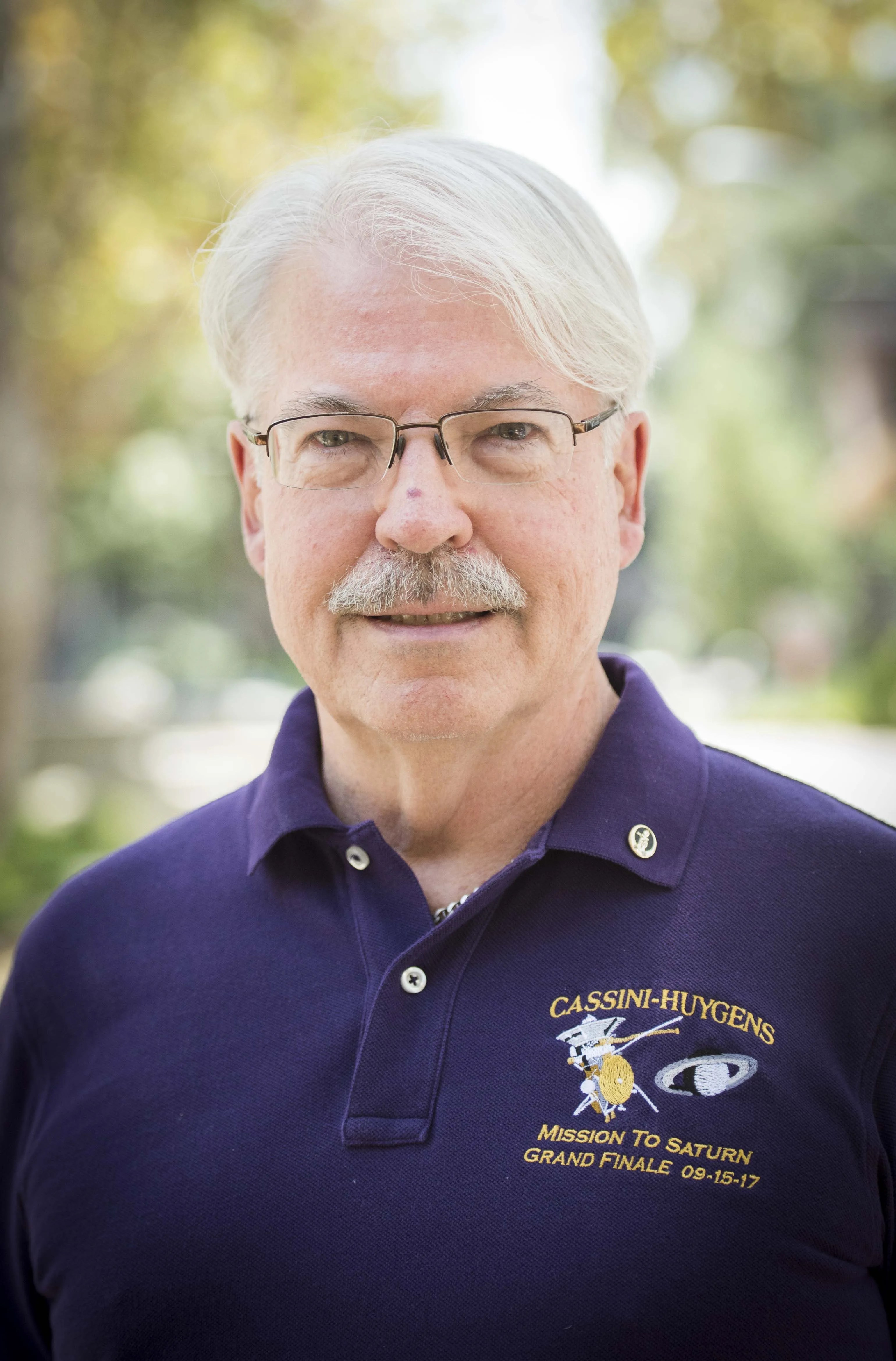
In the early 1980s he read a job listing from Ford Aerospace, which had a contract with the Deep Space Network. The job consisted mainly of training others to work on the DSN. Doody had done technical training work for Japan Airlines before his first retirement, and was also teaching aviation subjects at local community colleges.
He got the job, decided after a few years that he wanted to be at JPL, and kept calling missions. The Voyager team hired him in 1985 “just to shut me up.”
The truth was, few people knew the DSN as well as Doody after his time with Ford. Every mission needs someone to help manage real time communications between DSN and the spacecraft, and Doody became that person, first on Voyager, then Magellan.
In the meantime he went back to school, earning a master’s degree the most expedient way, through a human development program at a nearby college. He may be the only JPLer with a master’s degree and no bachelor’s.
When Cassini was approved in the early ‘90s, the fledgling mission to Saturn became the hot new thing. To improve their odds of getting hired, Doody and another hopeful co-worker ran out and bought two of GM’s new Saturns.
“Driving a Saturn, we thought, would be a real cool conversation starter.”
It was an obvious ploy, but an effective one. Doody has been with Cassini since 1994.
After Cassini, Doody would love to join a new flight project team, but no one sells a car with an exciting enough name.
Instead, Doody can be found almost any weekend night that Jupiter is visible, on the north side of Colorado Blvd. in Old Town Pasadena, with a telescope, a long line of random people, and a sign that reads, “Now viewing Europa.”
Grand Finale, 4:47 a.m. -- Mission Planning update: “The spacecraft has just crossed 20 degrees north latitude, altitude is 3,000 miles.”
Genderless spacecraft, anyone?
Tuesday, Aug. 1, 11 a.m. -- A debate breaks out near the end of the weekly staff meeting. After steering a spacecraft with nearly flawless teamwork for 20 years, mission members still can’t agree on whether to call Cassini a “he” or a “she.”
Linda Spilker, Grand Finale strategic planner Trina Ray, and public engagement leader Alice Wessen line up firmly for the female option. Maize resists any pronouns for the craft.
“She,” calls out Ray from the back row of chairs behind Maize, “is a long maritime tradition.”
Maize points out that ships take the female pronoun only because Latin uses gendered nouns, and the one for a vessel happens to be feminine.
The discussion moves on, but in a pause just before the meeting ends, Maize can’t resist poking the bear.
“Now about this gender thing,” he says, looking behind him at Ray with a mischievous glint. The room erupts in a laugh.
From her usual seat to Maize’s left, Julie Webster looks on with amusement.
“I see it as a machine,” she says later.
As a testing co-lead, Webster was the last person to sit inside Cassini before final assembly and launch.
“When I see Cassini, I see it differently than most people,” she says. “I don’t see the spacecraft, I see the wiring inside, actually.”
Webster knew the wiring so well, she felt obligated to sign on to the mission.
“I’m going to go to work for you, and you’re going to need me,” she told Maize in 1996.
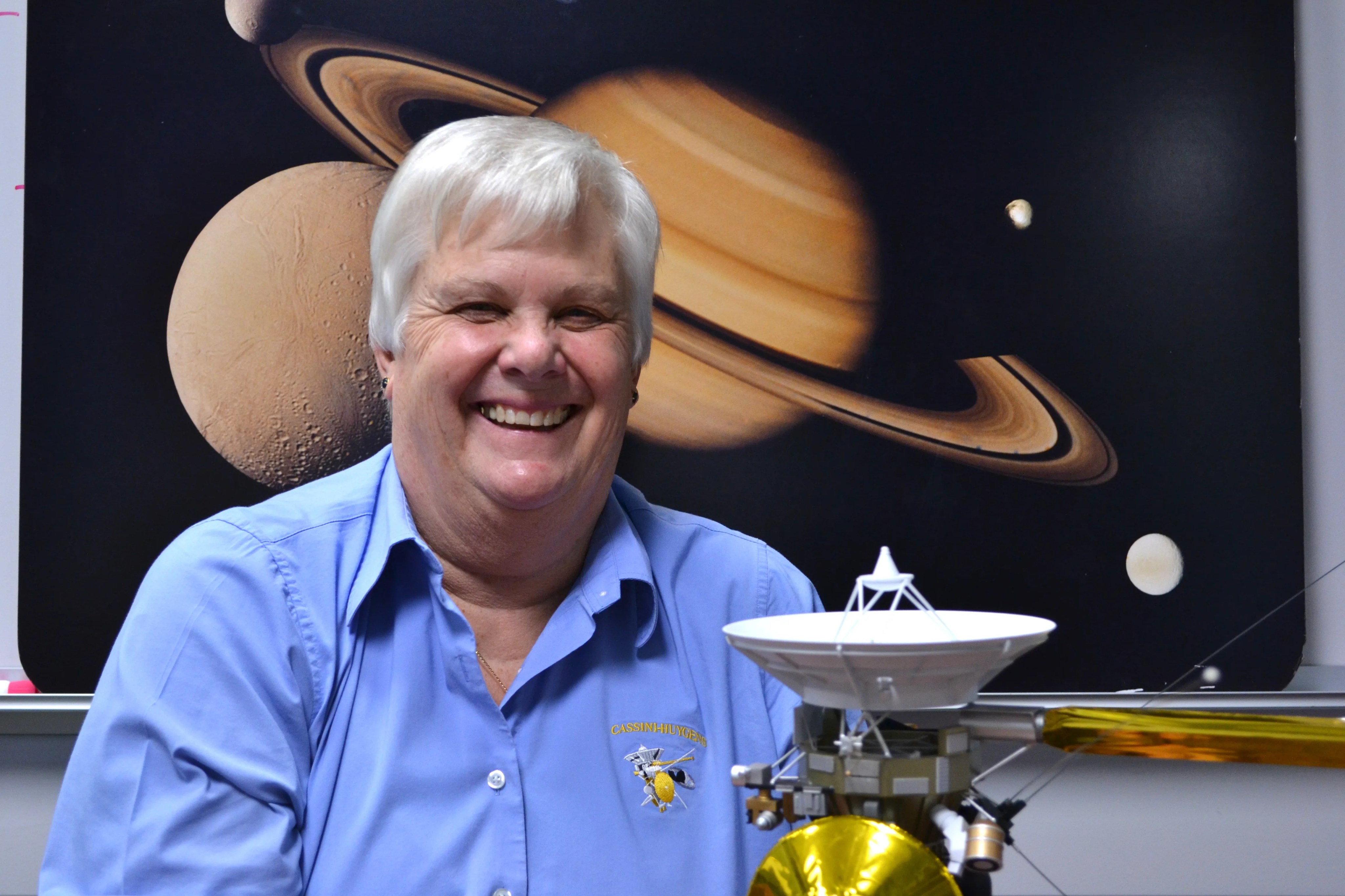
Grand Finale, 4:49 a.m. – Webster makes a suggestion: “Let’s put in one final poll at 4:50, because things will really start picking up at 4:54.”
The flight coordinator polls the systems leads for their status. All remain nominal, though Anabtawi notes that the frequency of her radio signal is starting to increase. She keeps her eyes fixed on the monitor, swaying in her chair.
From color guard to guardian of worlds
“I’ve never watched a spacecraft die,” says Jan Berkeley.
She will not only watch Cassini’s final moments on Sept. 15: she will know that the spacecraft is executing the commands that she assembled to keep it away from Saturn’s moons.
She will watch Cassini follow her orders to dive deeper and fight in vain against the friction of Saturn’s atmosphere. She will see it try to execute the fault protection commands that she wrote, as the heat and weight of Saturn’s gases begin to consume its fragile shell.
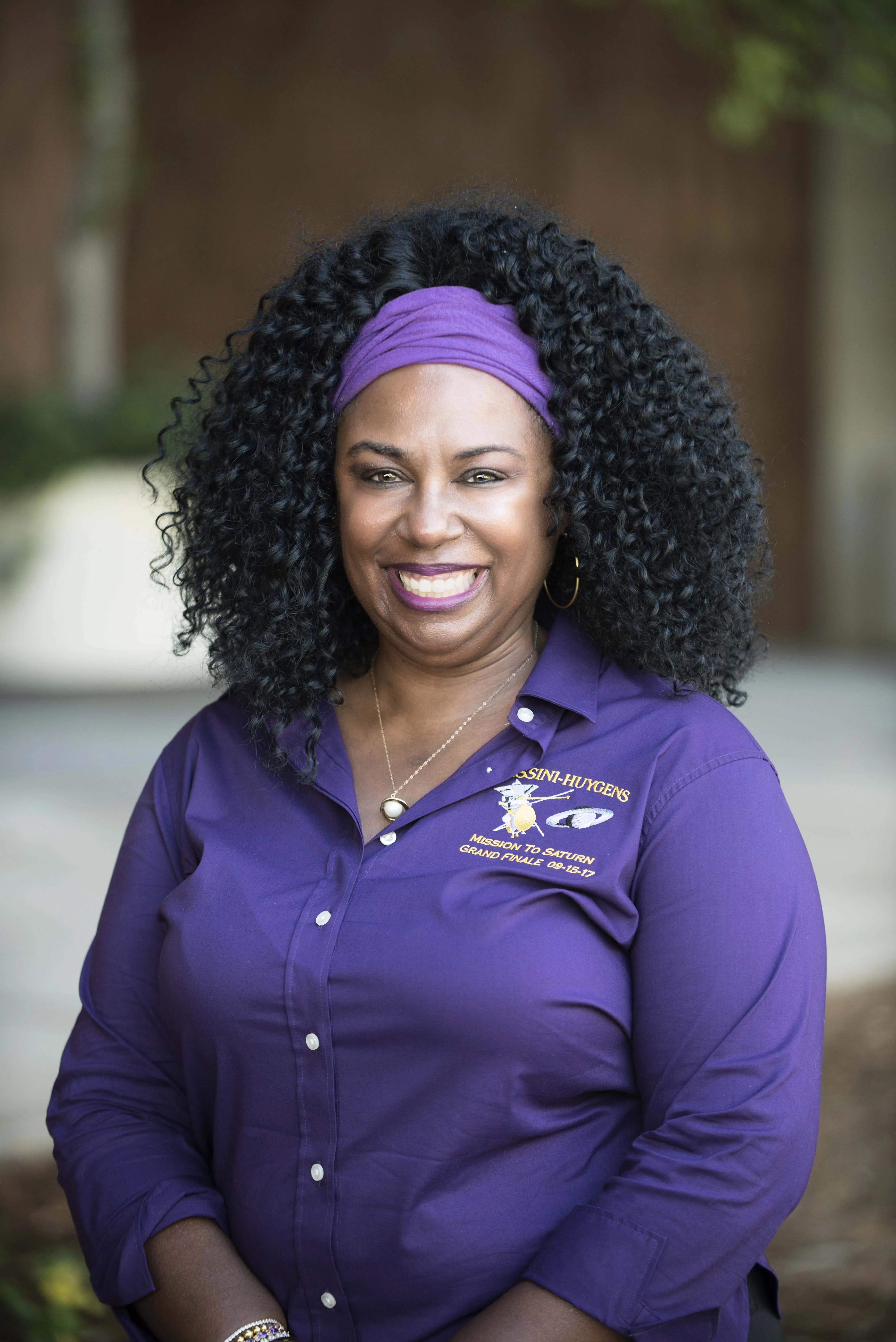
Berkeley is an unlikely JPLer. She might never have been hired if she had gone on the job market right after graduating from USC in electrical engineering, in 1986. Challenger had just exploded, and the launch of the Galileo flagship mission was scuttled.
But Berkeley had already decided to spend an extra year with USC’s famous marching band, spinning flag in the color guard – a skill she had picked up at John Muir High School in Pasadena.
Galileo was hiring again after Berkeley’s year on tour. She has been at JPL ever since, and performed her lucky flag routine at her 50th birthday party.
Grand Finale, 4:53 a.m. –- Update from Attitude Control Systems: “Our attitude control error is starting to be more active. We are in the atmosphere.”
Timing is everything
Monday, Aug. 14, 1 p.m. -- Maize and the navigation team have gathered for a crucial decision. Cassini’s last five orbits will be the lowest yet, and if the drag is too strong, the spacecraft may need to “pop up” to maintain its momentum.
A navigational expert leads the team through data showing that the atmospheric drag, while higher than expected, remains well within the spacecraft’s tolerance.
Describing the lower altitude of the final five orbits, she refers to Cassini “taking the plunge.”
The room stops her with a nervous laugh.
Please reserve the use of “plunge” for Sept. 15, she is asked.
Grand Finale, 4:54 a.m. –- Update from Mission Planning: “The spacecraft has just crossed 10 degrees north latitude, altitude 1,000 miles.”
And within seconds, Earl Maize points to a display out of camera view. Turning to the row behind him, he exchanges words with his chief scientist, Linda Spilker, and JPL Director Mike Watkins.
The final anomaly
Sherwin Goo has been on the sequencing team since launch, and has flown nearly a third of Cassini’s sequences, including two of the most critical: S02, which guided Cassini into Saturn’s orbit, and S07, which released the European Huygens probe of Titan.
“The thing I will always remember about those sequences is their complexity,” Goo says. “We had to keep track of hundreds of real time commands, along with the pre-written sequences of commands. The feeling of euphoria when I knew it had all executed as planned is something I will never forget.”
Almost all of Cassini’s sequences have executed without significant anomalies.
“I’m spoiled by this mission,” he says. “We trained for the worst case, but we hardly ever used our anomaly recovery procedures. The fact that we flew an almost flawless mission is one of the most significant accomplishments of Cassini.”
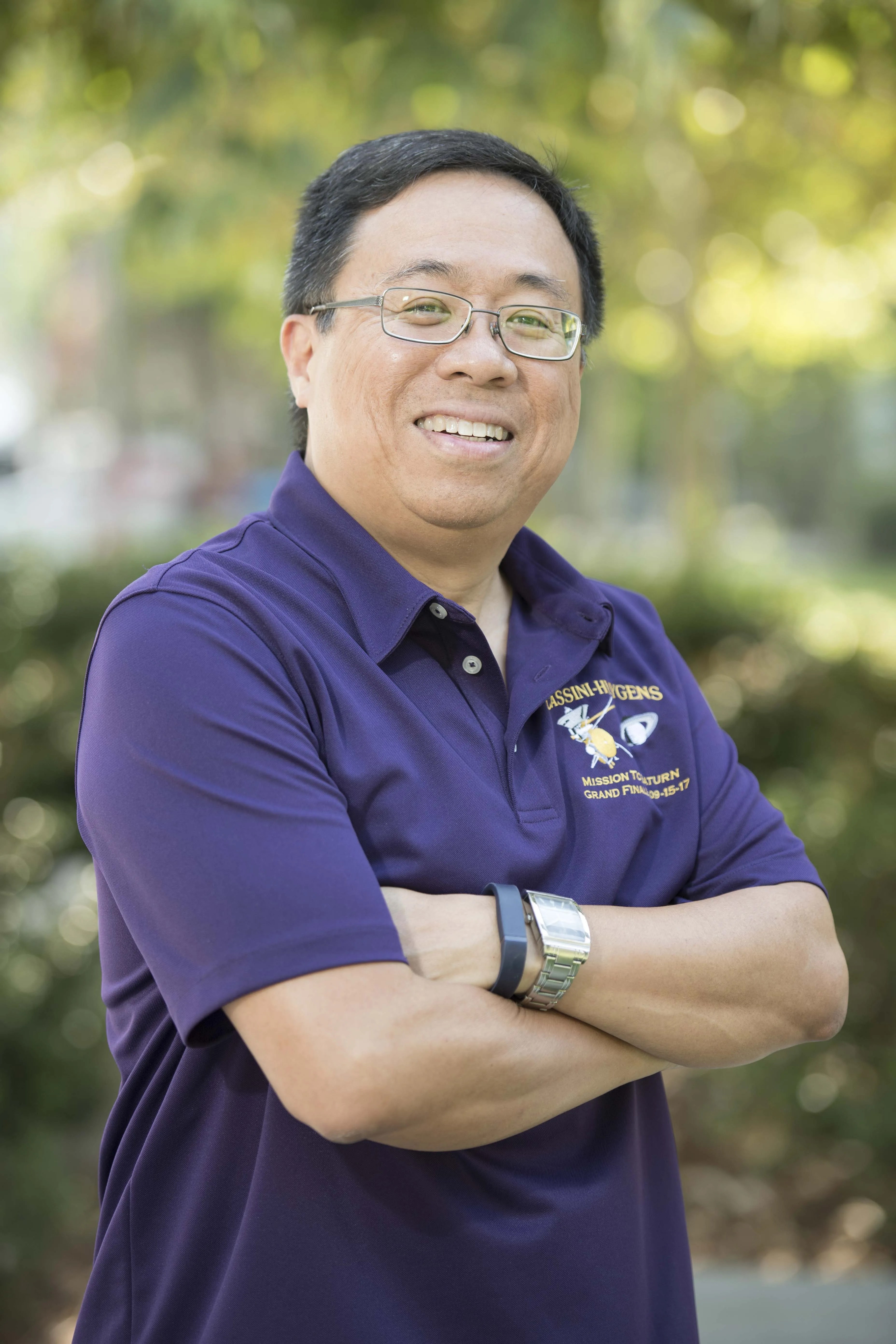
On Sept. 15th, the team will cycle through every one of its rarely used recovery procedures, before conceding that even Cassini cannot overcome the crushing anomaly of Saturn’s atmosphere.
Grand Finale, 4:56 a.m. –- Staring at the monitor, Anabtawi calls into her headset microphone: “We have loss of signal.”
(She says later of that call: “In the 20 years that I’ve been supporting multi-mission operations, this was the toughest thing I ever had to do.")
Webster follows her, addressing Maize and almost asking for permission: “Can we call loss of signal, loss of X-band at… (long pause) call loss of signal at 11:55:46 (UTC) for the S-band, so that would be the end of the spacecraft.”
Their day in the sun
Saturday, Aug. 26, 4 p.m., high above La Canada -- Earl Maize has opened his house in the hills for the team’s last annual barbecue.
In an irony of Cassini, the team that gave humanity a window on Saturn and its moons, toils in offices without a single pane of glass.
The weekly staff meeting, the biweekly breakfast, the radio science data room, the grey cubicle city: all lit by fluorescent tubes, deep against the hillside on which Mission Control is built.
This day is an exception. Behind the small pool and garden, the hill falls away and reveals the La Crescenta Valley.
The Cassini team could fill the Main Street of a little town. There are bakers, brewers and musicians like Maize, who plays in a classical guitar ensemble.
And of course there are the Cassini virtual singers, who adapt popular lyrics for the mission, such as “Come Sail Away,” by Styx.
A gathering of review boards appeared above my head
They approved my disposal plan, and this is what they said
They said go take the plunge, go take the plunge, go take the plunge Ca-SS-i-ni
Come take the plunge, come take the plunge, come take the plunge with me
When Cassini breaks up, so will its team. Pinning down the time of demise of a machine hurtling towards Saturn is simple, compared to predicting the impact on team members.
“There’s this culture here of steely-eyed missilemen,” says Maize. “But when we gather up, a lot of times conversations do turn to, how are you going to feel?
“This is what we do, and when we can’t do it anymore, when we are no longer able to explore Saturn, there’s a big transition.”
Maize has been on the mission for 17 of its 20 years, starting when it was still in its planning stages.
“To finish the mission this way is just phenomenal,” he says.
Mission planners had other options. They could have left Cassini in long, looping, endless orbits around Saturn. Instead they chose to study the rings and atmosphere up close -- which could only happen if the spacecraft were put on a spiraling course into Saturn.
“I feel a great sense of pride,” Maize says. “I’m going to be sad. You don’t like to lose the team, the camaraderie, the mission. I come out every morning and there’s something new.
“But it’s a good ending.”
Grand Finale, 4:57 a.m. –- Maize addresses the team.
“You just heard the signal from the spacecraft is gone, and within the next 45 seconds so will be the spacecraft.
“I hope you’re all as deeply proud of this amazing accomplishment. This has been an incredible mission, an incredible spacecraft, and you’re all an incredible team.
“I’m going to call this the end of mission. Project manager, off the net.”
He removes his headset for the last time. As the room applauds, he and Webster hug and exchange tight smiles.
As others mingle and hug, Anabtawi remains standing behind her chair for a few more minutes, eyes still on her monitor.
Heventhal does not dissolve into sobs. But he does dab at the corner of his right eye with a Cassini-purple handkerchief.
Only Webster, the holdout who refuses to humanize a machine, takes off her glasses to wipe away the tears.
A flash of light in an alien sky
It was morning on Saturn, when a streaking spark above the clouds outshone the sun.







